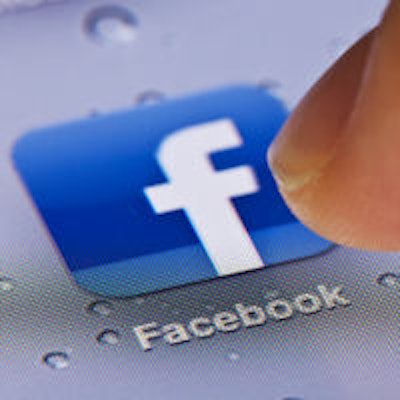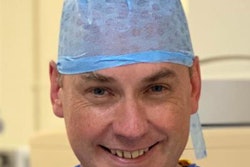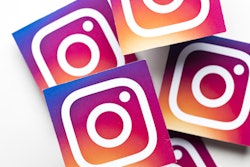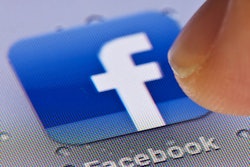
Social media is a minefield for unwary medical professionals, and it's vital to be fully aware of your local guidance, particularly on anonymization of images and consent issues, a group of U.K. radiologists warned at RSNA 2015 in Chicago.
"If there is one take-home message for those involved in social media and about to compose a post: If in doubt, don't!" noted lead author Dr. David Little, chair of Royal College of Radiologists' Junior Radiologists Forum, in an e-poster presentation.
Particular pitfalls on social media present due to the contemporaneous nature of the interactions, he explained. For instance, a radiologist may post a fully anonymized image of an interesting knee MRI scan, and if the accompanying commentary reads "College quarterback came in today, nasty!" then anyone who knew where the radiologist worked and followed college sports may be able to deduce the identity of the patient.
Social media is a great way of blowing off steam, and it is easy to find like-minded people to have a moan with about any topic, but care must be taken with personally directed comments, even if anonymous. If your social media account is used for patient education, then consider a second, personal account for such informal posts, advised Little and colleagues.
"The temptation to use social media is as great for doctors as for any other profession. We are, however, in a profession which deals with patient information and requires a level of trust from the public that is rare for other disciplines, and with this comes particular pressures," they stated. "Various regulatory bodies and medical associations around the world have produced guidance for the use of social media. Although these vary, there are consistent themes which serve as a useful framework for the social media user."
If you are on call and have an argument with the surgeons, posting "The surgeon on call tonight is incompetent #IschialTuberosityVsOlecranon" will look unprofessional, and it may be easy to trace both the target and source of the insult. It also directly contravenes guidance from the U.K. General Medical Council (GMC) under Good Medical Practice, and doctors have been suspended for offensive comments made online about colleagues, continued Little and colleagues. Similarly, photos from nights out showing drunken behavior, or even simply with alcoholic drinks in hand, may be considered unprofessional.
"Note that you may be tagged in the photos of others and have no direct control over their publication on the Web. It would be wise to politely and discretely ask for such material to be removed," they wrote.
The standards of privacy, confidentiality, and behavior for social media do not differ from those used for traditional media, and you shouldn't share any information or data, personal opinions, etc. that would not be appropriate to do so in the hospital elevator or a print journal, the authors recommended. Some doctors choose to have an anonymous profile on Twitter, but these are never 100% secure. One of the authors recently guessed the true identity of a new anonymous Twitter account based on a previous encounter on a website more than five years earlier.
The GMC even suggests that if you identify yourself as a doctor on social media, you should also reveal your full name. Any material written by authors who represent themselves as doctors is likely to be taken on trust and may reasonably be taken to represent the views of the profession more widely, according to GMC.
For accounts that are for personal use, such as those on Facebook, security and privacy settings should be set to high, and friend requests from unknown individuals or patients should be politely rejected, the authors noted. If there is a professional account that is a suitable alternative, then consider pointing this out. Also, patient data are confidential, any disclosure of patient details may go against the laws in your country, and each country has its own laws and recommendations on what constitutes suitably anonymized data, they added.
#FOAMrad: Origins in a Dublin pub
In the same RSNA 2015 e-poster, Little and colleagues urged all radiologists to participate in #FOAMrad, which stands for free open-access radiology education.
The concept of FOAM (free open-access meducation) was coined in a pub in Dublin during the 2012 International Conference on Emergency Medicine, and it spontaneously emerged on social media through collaboration toward the common goal of improving medical education, they explained. A group of radiologists and radiology trainees on Twitter have applied this concept directly to radiology.
#FOAMrad is the sharing and discussion of free open-access radiology education material using the online world of social media and blogs. It is not owned by any individual or company; it is merely a concept and a community, Little and colleagues wrote. #FOAMrad is not a mechanism for the illegal sharing of copyrighted material. It should only be used to share openly accessible information and should respect copyright and creative commons licenses where applicable. #FOAMrad should not be used to promote "for-profit" ventures.
#FOAMrad allows learners to access a wider range of material and allows teachers to have a greater audience, removing international boundaries and flattening traditional hierarchies.
"All open-access medical resources are dependent on a proportion of users also contributing material. Moderation on wiki sites such as Radiopaedia, and engaging in discussion on social media channels is a way to improve quality of information," they continued.
Generally, the institution that generates an image retains ownership of a radiological image, but the legalities of image ownership are likely to differ from country to country. Images can generally be used for educational and training purposes, as well as for clinical treatment purposes subject to being anonymized appropriately. Best practice is to discuss image ownership and issues of patient confidentiality with the local information governance department, the authors concluded.



















